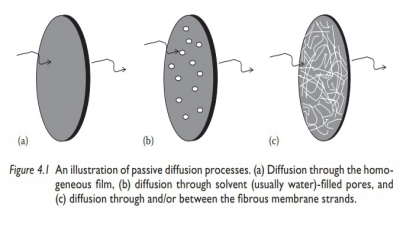Biopharmaceutical considerations
| Home | | Pharmaceutical Drugs and Dosage | | Pharmaceutical Industrial Management |Chapter: Pharmaceutical Drugs and Dosage: Biopharmaceutical considerations
To achieve an optimal drug response from a dosage form, a drug should be delivered to its site of action at a concentration that both minimizes its side effects and maximizes its therapeutic effects.
Biopharmaceutical
considerations
Introduction
To
achieve an optimal drug response from a dosage form, a drug should be delivered
to its site of action at a concentration that both minimizes its side effects
and maximizes its therapeutic effects. The drug concentration at its target
site depends on the dose of the drug administered and the rate and extent of
its absorption, distribution, metabolism, and elimina-tion
(ADME/pharmacokinetics). For a drug molecule to exert its biological effect, it
must be absorbed unaltered in a significant quantity (absorption) and
transported by the body fluids. Moreover, it must escape widespread
distribution to unwanted tissues, traverse the biological membrane barri-ers,
penetrate in adequate concentration to the sites of action (distribution),
escape metabolism and excretion (metabolism and elimination), and inter-act
with its target in a specific fashion to cause the desired alteration of
cellular function (pharmacodynamics).
The
biological effect of a drug depends on three components:
1. Biopharmaceutical factors
a. Dose and dosing frequency
b. Route of administration
c. Drug release from the delivery system
2. Pharmacokinetic factors (what the body does to the drug)
a. Absorptin
b. Distribution
c. Metabolism
d. Elimination
3. Pharmacodynamic factors (what the drug does to the body)
a. Concentration–effect relationship at the site of action
b. Specificity of drug action
All
these factors must be taken into consideration when making dosage form
decisions. For example, a high-dose drug may not be a suitable can-didate for
an oral sustained-release dosage form due to tablet size restric-tions.
Similarly, a drug with a long plasma elimination half-life and low frequency of
dosing, such as once in a day, would not be considered a good candidate for a
sustained-release oral dosage form.
Physicochemical
properties of the drug, such as solubility, partition coef-ficient (Ko/w), pKa value, diffusion rate, and intrinsic dissolution
rate, pri-marily determine the biopharmaceutical
aspects of dosage form design. In this chapter, we will discuss these
aspects, with an emphasis on oral solid dosage forms, such as tablets, since
these are the most commonly used drug delivery system. We will discuss drug
release from the dosage form (diffu-sion and dissolution) and absorption across
the biological membranes.
Related Topics

